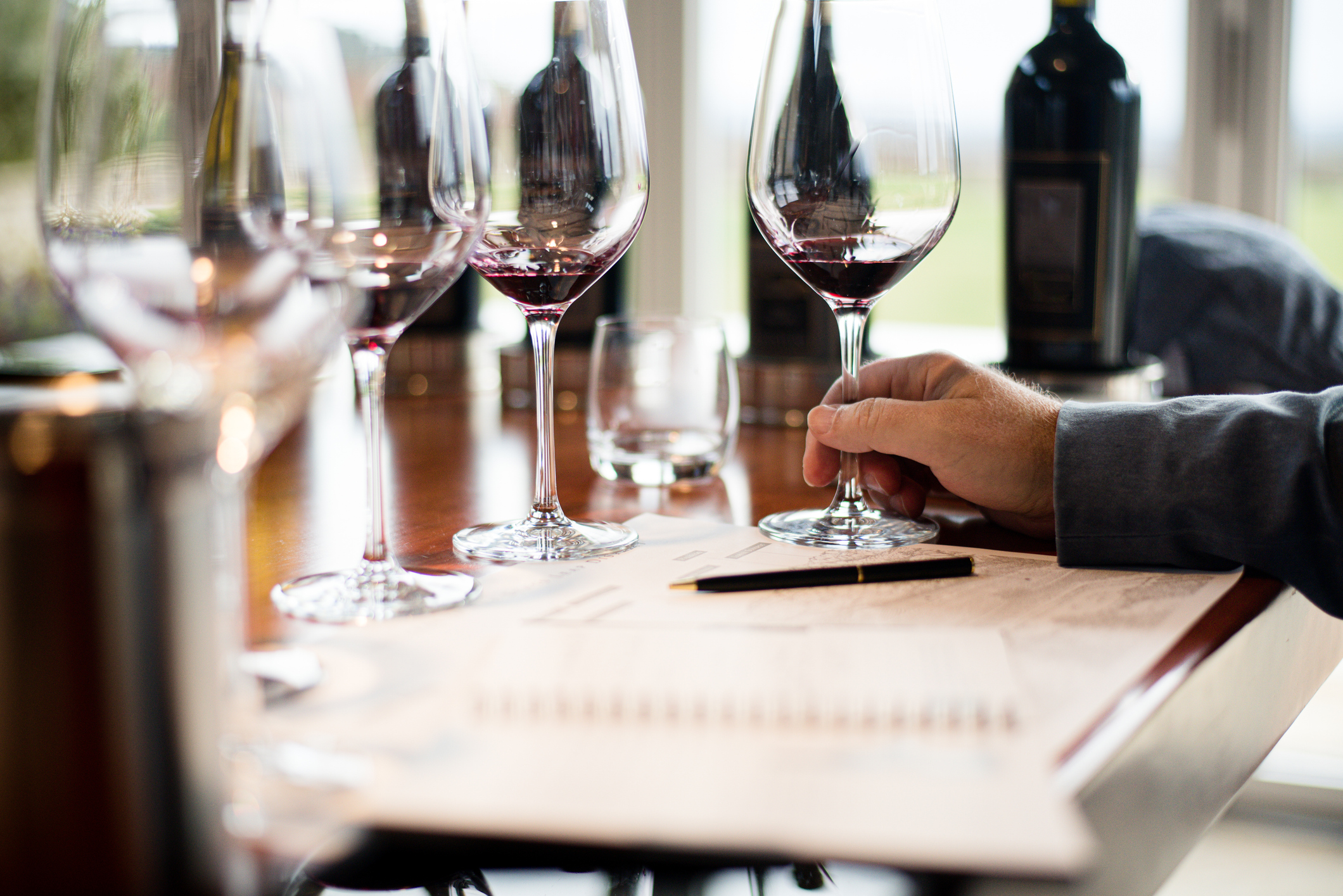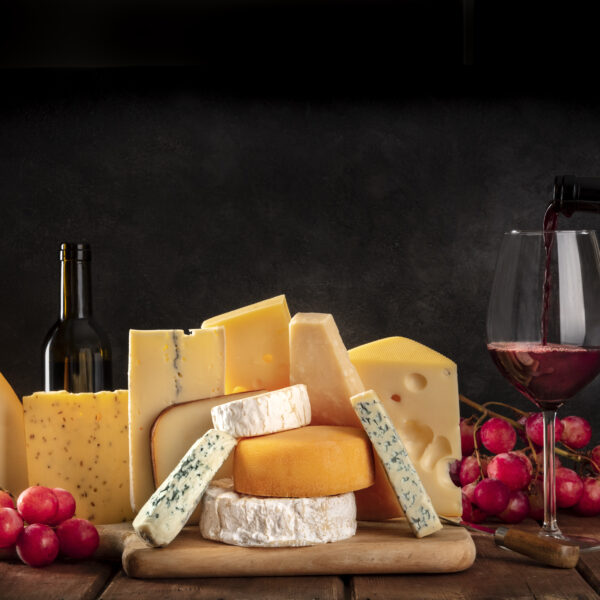As a wine expert, you know that capturing the essence of a wine’s character is both an art and a science, a skill honed over years of experience. Traditionally, wine tasting notes bridge the sensory experience of wine and the language we use to describe it.
Our goal is to distill the complex interplay of a wine’s characteristics into a narrative that resonates with colleagues and casual drinkers. But this practice is not without its challenges. The subjective nature of taste, the abstractness of describing sensory experiences, and the variability of individual perception all contribute to making the traditional practice of identifying tasting notes a complicated and, at times, intimidating process.
Today we’ll explore the traditional art of wine tasting notes, while exploring how Artificial Intelligence (AI) brings a fresh, personalized approach to this age-old practice.
The Art Of Wine Tasting Notes
Wine tasting notes serve to capture and appreciate the full essence of wine. A guided record of a wine’s characteristics, helping guests understand and articulate the unique qualities of each bottle of wine they taste. Here are a few common characteristics you may have used to describe wine to your guests:
- Visual Aspects: The wine’s color and clarity to gauge maturity and grape variety—vital cues that inform your expert recommendations.
- Aroma: The wine’s aroma that, through swirling, identifies complex scents ranging from fruit to oak, which are critical in guiding client selections.
- Taste: The balance of sweetness, acidity, tannins, and body to understand the wine’s structure and how it might pair with menu items.
- Finish: The finish, for its duration and complexity, is a key indicator of quality that can influence purchasing decisions or pairing suggestions.
Vocabulary of Wine Tasting: Navigating Descriptors
The vocabulary used in wine tasting notes is as rich as it is complex. Mastering this language enhances your ability to analyze and appreciate wine and empowers you to convey these nuances effectively to your clients. This expertise in descriptive language is key in guiding your clients through their wine experiences. Let’s reference some you’ve most likely mentioned once or twice:
- Acidity: Describes the sharpness and freshness; key for balance in wine.
- Body refers to the weight and fullness of wine on the palate. It can be light, medium, or full.
- Tannins: Describes the dry and puckering feeling often associated with red wines.
- Floral: Refers to aromas reminiscent of flowers, such as rose, violet, or elderflower.
- Fruity: Descriptors like berry, apple, peach, citrus, or tropical hint at the fruit flavors present.
- Earthy: Indicates flavors or aromas that remind one of earth, soil, or forest floor.
- Spicy: Refer to notes of spices like black pepper, clove, cinnamon, or nutmeg.
- Oak: Used to describe aromas and flavors that come from oak aging, including vanilla, smoke, toast, and coconut.
- Mineral: Refers to the presence of mineral flavors, sometimes described as flinty, chalky, or like wet stones.
- Buttery: Often used for rich, creamy wines with a smooth texture that can come from malolactic fermentation or oak aging.
- Crisp: Indicates a pleasing acidity that gives the wine a refreshing quality.
Navigating the Challenges in Wine Tasting Vocabulary
The language we use to describe what our guests are experiencing is complex and, at times, problematic. Let’s explore the inherent challenges of articulating the sensory experience of wine.
The Abstract Nature of Sensory Description
Finding the right words to express the flavors and aromas in wine can be as challenging as capturing the essence of a melody or a painting in words.
Our individual backgrounds, experiences, and even genetic makeup impact how we perceive tastes and aromas. What might be a clear note of cherry to one person could be marzipan to another, influenced by their unique sensory histories.
Overcoming Subjectivity and Intimidation
Even among expert sommeliers, there can be a wide range of descriptions for the same wine. This subjectivity can lead to confusion and inconsistency, making it difficult for guests to relate to or understand the tasting notes.
Overly elaborate and exotic descriptions, while potentially accurate, can often intimidate or alienate those new to wine tasting. This complexity can create a barrier to entry, deterring potential enthusiasts.
The Limitations of Language
Much of wine language is a learned code acquired over time. New tasters often need help with this language barrier, which might not accurately reflect their experiences.
Focusing on breaking down a wine into separate aromas and flavors can sometimes lead to a reductionist view, where the holistic experience of the wine is lost. The sum of a wine’s parts is often greater than the individual components.
Recognizing these challenges is critical in making wine tasting and its language more accessible and enjoyable for all guests. It’s about striking a balance between using established descriptors and acknowledging the personal, subjective nature of wine tasting. Tools like Aivin, an AI-driven tool for sommeliers that leverages AI to personalize wine experiences, offer a promising path forward, helping bridge the gap between the traditional art of wine tasting and the diverse perspectives of today’s wine lovers.
The Digital Shift in Wine Tasting Notes
We are seeing the shift towards digital solutions for wine experiences, which marks a significant leap. Take Aivin for example, a groundbreaking AI-driven tool, designed to help sommeliers personalize, select and pair wines for their clients.
Aivin’s approach to wine tasting notes is rooted in a deep appreciation for the rich history and complexity of wine, while also acknowledging the challenges faced by traditional methods. Through its advanced AI algorithms, Aivin offers a personalized, data-driven, and user-friendly platform, making the world of wine more personal and guest specific.
Advantages Over Traditional Methods
Aivin represents how technology can support tradition, leading to a more informed, inclusive, and delightful wine experience.
- Ease of Recording and Sharing: Unlike handwritten notes or memory-based methods, digital platforms like Aivin allow easy recording, storage, and sharing of wine tasting notes. This not only enhances guest record-keeping but also fosters a community of sharing and learning.
- Data-Driven Insights: Aivin uses data analytics to identify trends and patterns in wine preferences and characteristics, offering insights that go beyond what’s possible through traditional tasting. This can be particularly beneficial for discovering new wines and understanding evolving taste profiles.
- Educational Value: For those eager to learn, digital platforms offer an invaluable educational resource. Aivin, for instance, can provide detailed background information about wines, winemaking processes, and terroirs, enhancing the overall knowledge of the user.
Maintaining a Sensory Balance with Aivin
While Aivin harnesses the power of AI to revolutionize wine tasting notes, it’s essential to recognize the importance of maintaining a balance between technology and the sensory, human experience of wine tasting. Wine, after all, is not just about analysis and data; it’s about the sensory journey, the emotions, and memories it evokes.
Key Takeaways
In embracing the digital revolution of wine tasting notes, Aivin stands out as a pioneering AI-driven tool for sommeliers, offering a blend of tradition and innovation. Aivin redefines the way professionals like you enjoy and offer wine
. Experience this transformation in wine appreciation for yourself – try Aivin today. You can also request a demo if you would like to see how Aivin works for wine producers, restaurants, wine shops, or wine directors.




